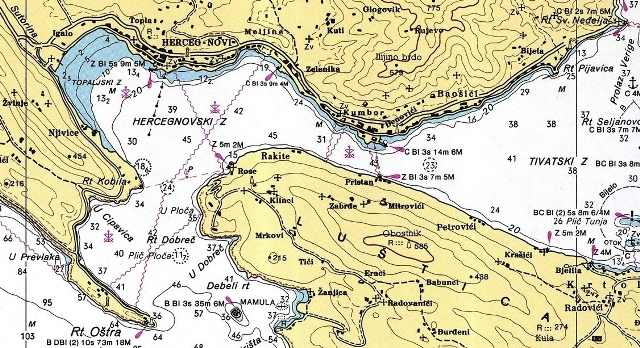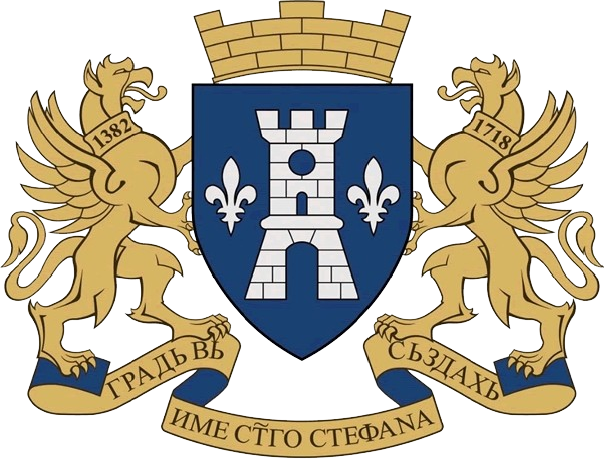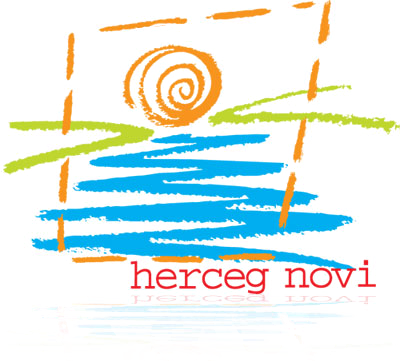Herceg Novi Riviera is a 15 km long coastline and stretches from Herceg Novi, through 7 different and unusual tourist resorts, down to Kamenari. The coastline runs from one place into the other, enabling you to walk by the sea, without leaving the town.
 Nautical map of Boka Kotorska (1:100 000), 1,3MB
Nautical map of Boka Kotorska (1:100 000), 1,3MB
Zelenika
Zelenika is a small port, which can be reached from Meljine by walking over a hill named LALOVINA. The name Zelenika comes from the Mediterranean evergreen plant „Zelenika“. It was also the last stop of the old railways, which no longer runs. The most dominant building in Zelenika is the first hotel built in Montenegro in 1902, owned by the Magyar family. Further into the bay, in the hamlet Presjeka, lay the remnants of St. Tomo church, possibly built in 10 or 11 century, in Romanesque style.
Kumbor
The next place on the map is Kumbor, about 6 km from Herceg Novi. The name originate from the Italian word „Conborgo“, meaning-suburb. However, it is not a Herceg Novi suburb, but an old antique town called Stoli, which was presumed to be situated in the western part of Djenovici. On the border of Kumbor-Djenovici, the head of King Domicijan was found, originating from 1st century, as well as sacral monuments from 18 century like: the coverture of Our Lady, St. Nedjelja and churches St. Nikola, St. Vasilije of Ostrog from 19 and 20 century.
Djenovic
Djenovic is the smallest place in the municipality. The name originates from the surname Djonovic. This was confirmed in some Venetian documents where it is mentioned as Gionoevich. According to the saga, the old Greek colony Stoli, or Stolium, situated at the entrance of todays Djenovic, sunk in the sea following a catastrophic earthquake. The Greek word Stoli signifies a journey preparation, shipping, military mission or a village. Other findings are roman walls of regular shapes that could be seen down in the sea on only few meters, as well as fragments of walls, polished stones and other item from ancient time.
Sacral monuments: since St. Spiridon church was built in 1867, St. Stefan church was not in operation and all important icons, work of Petar and Djordje Rafailovic from 18 century, since than have been kept in the St. Spiridon church. Another church in the area is St. Simeon Bogoprimac, built at the start of 17 century and St. Nikola in 19 Century.
Baosic
There are various stories regarding the origin of the Baosic name. In the King Dusan charter from 1351, it is mentioned as Baosle.In another charter is stated that it was named after Baosa Cvjetkovic in 1590. In a third, after the rulers Balsici name, who also lived there.
St. Nikola church is in Baosic. It was renovated in 1802, but it is presumed to be from 16 century. The older iconostasis is by Aleksije Lazovic Bjelopoljac, the son of the famous Simeon Lazovic, who painted the large iconostasis the Rise of Our Lady, in Savina. The younger iconostasis is by the Greek artist Nikola Aspioti. In the 1880th, young French officer and writer Pierre Loti was here with the international fleet. He also wrote a story about love that he cherished for a young and beautiful local resident Paskvala Ivanovic, where exits a memorial plaque. At this tourist resort in every February, begins Mimosa festival, simbolic picking of mimosa flower. Than on the road, along the sea coast, is gathering several thousand tourists from Montenegro and abroad.
Bijela
Bijela has been know under this name since 14 century. The palce is full of important churches, one being Riza Bogorodice( The Garment of Our Lady). It was built in 1824 on the ruins of much older building, with its apse leaning on the apse of the new church. According to the analogy of the chapel in the Our Lady church in Studenica, the apse could be as old as 12-13 century. Analysis of the found frescos confirms this. In the lower section one can see the Bowing to the Victim, while in the upper is Our Lady, with outstretched arms and archangels on each side. These subjects are characteristics of 12 century art. The cathedral church was donated by Bishop Danilo, as evidenced by his portrait at the bottom of the aspe. In the church treasury is a collection of old printed books: Crnojevic Hymn Book printed by Makarije in 1494, Hymn Book by Bozidar Vukovic Podgoricanin printed in Venice in 1537, Psalter manuscript in wood bind covers, Liturgical Book, 16th century, leather bind and a Prayer Book from 1580.
St. Petar is a catholic church from 18 century. Parts of a much older building have been incorporated in the front wall of this church. Frangments of decorative plastic with text have been found, proving that there was a short dominance of the Franaks in this area in year 805.
The first Benedicts priory was built round that time , but was demolished by the Mongolians in 1242. It is thought that St. Petar church was built on the ruins of the priory. Another church here is St. Vraci.
They say that Pope Siksto V. originate from a small village about an hour walk North from Bijela called Bjelske Krusevice. His father was a christian, from the Sisic family, although other say he was from Svilanovic family and that as a child served in the Catholic monastery in Kotor, where he was received in the Catholic faith. He was taken to Italy by an Italian monk and lived near Ancona. He married and had a son, who later became Pope Siksto Pereti. Why Siksto- because he originated from Sisic. Why Pereti- in memory of his fathers birth place Krusecice (pear), which is in Italian read-pera.
Kamenari
Kamenari are located on 16 km east of Herceg Novi, in the Verige strait. It was named after the stonemasons who worked there and called them self by that name (kamen=stone).
Sacral monuments: St. Nedjelja and St. Nikola churches of 18 century, Gospa of Rozarije from 19 century, two Catholic churches –St. Ana, one on the Djurici hill, the other by the sea.
The church St. Nedelja, lying on a picturesque little hill in Josice-Kamenari (strait Verige), was built in 1867, on the ruins of previously a small church from the end of 17 century. Monumental in size and most unusual shapes of flat surfaces, domes and towers, it creates most fantastic artistic vision. On its Western facade leans tall bell tower, built in the style of the bell tower of Cloister Savina. The throne icons of St. Jovan and St. Nedelja, as well as a line of other apostles were painted in the 19 century by Spiro Djuranovic from Kamenari, the first Boka artist who graduated in Art School. Other Greek and Russian icons can also be found in the church. Of special value is the large, restored icone of Our Lady, holding Jesus Christ by the right hand, from 15-16 century.
There is a regular ferry crossing here to Lepetane on the other side of the sea.


